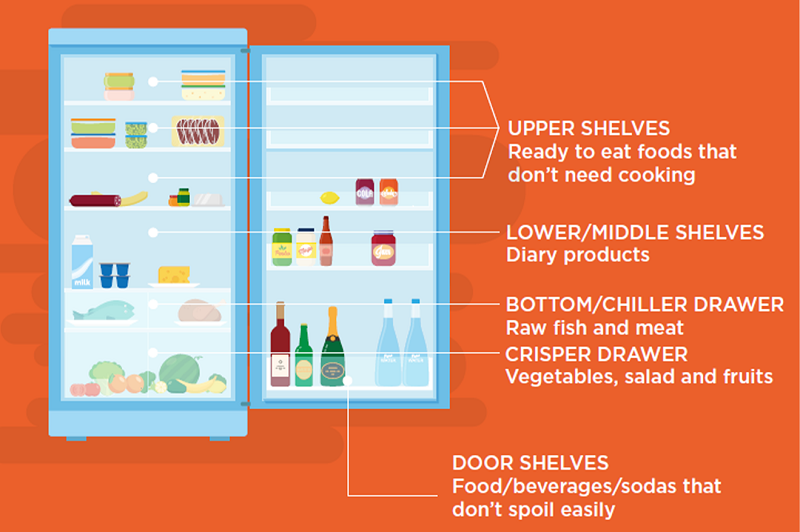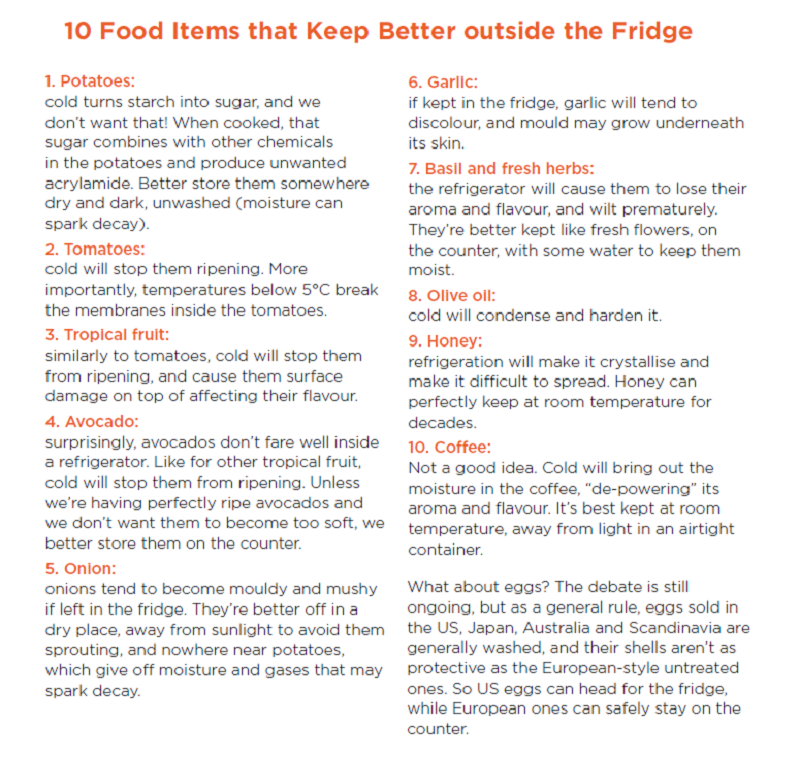While industry can achieve a lot in terms of sustainability, the last mile is entirely up to consumers, and the way they use appliances in their own homes.
Using a refrigerator would seem to be the easiest and most natural thing in the world to the vast majority of us. Yet a conscious and at times different use of the most important appliance in our kitchens could help to make the difference for the environment.
FOOD WASTE AND ENERGY CHALLENGES
Waste and energy consumption are the two fronts the battle for fridge sustainability is fought on. The correct preservation of our food, in the sense of it not going off before we have a chance of consuming it, will help keep food waste down, and as a consequence we could be saving on the resources needed to produce it, like water, energy, soil and transportation. On the other hand, making sure our fridge doesn’t consume too much energy will help save on carbon emissions.
Our fridge can serve as the pivot point of our domestic food waste and energy consumption reduction strategy. It all comes down to the way we load it and the way we manage fresh produce and leftovers.

When it comes to loading our shopping into the family fridge, we don’t really think there’s a right or wrong way of doing it, as long as it makes sense to us. But in fact it does make a difference. Placing the most used items at the front of the shelves, and also the most perishable ones, will help us “see” them better every time we open the fridge. This will help us avoid spending ages searching with the door open, which would cause the motor to work harder to maintain temperature, consuming more electricity. Also, if perishable produce is hidden at the back, it might be too late once we finally realise it’s been sitting there all that time, so having it constantly under our eyes might avoid it being thrown away.
The impact of food waste in terms of cost to the environment is simply mind boggling, and every little improvement can make a huge difference. According to the European Food Information Council, in 2019 more than 930 million tonnes of food waste were generated, of which roughly 60% came from households. Throwing away that single wrinkled tomato we forgot at the bottom of the fridge costs the environment about 125 litres of water and 300 g carbon emissions.
Wrapping certain items, or boxing them will help prolong their life, with better chances of us eating them before they spoil. Typically, cheeses should be wrapped in their specific paper, eggs, if at all kept in the fridge, should be left in their cartons to avoid picking up unwanted odours. Also, producers have developed differentiated temperature and humidity storage zones that are best adapted to different food types. Storing food correctly in these dedicated areas certainly helps better preserve it, greatly reducing waste.
A fair number of refrigerators produced in the world can’t guarantee even temperatures throughout the cavity: temperatures at the bottom tend to be lower than those at the top, and door balconies also tend to be slightly warmer. Placing food items in the best position can help them last longer.
When freezing food, it should be put in sealed containers or tightly wrapped in cling film to avoid freezer burns, and labels with content and date of freezing should always be used. How many times have we thrown away mysterious frost-covered containers simply because we couldn’t remember what was in them nor when we froze it?

LOAD THE RIGHT STUFF
We would be surprised to learn that some of the stuff we are used to keep in the fridge actually doesn’t really need to be refrigerated, and in some cases would do better by staying out of it. Lists of what goes in and what stays out are common, and the debate around certain items is still open, but being more careful about what foods we keep in the fridge might help reduce the sheer volume of food stored, reducing the energy consumption to keep all that crowd refrigerated. And maybe, we might find out we don’t really need such a big fridge, after all.

PLAN A SECOND LIFE FOR YOUR LEFTOVERS
Another way of fighting food waste is to plan for the recycling of potential leftovers. It can start with designing the original meal the ingredients are used for in such a way that any leftovers can be used in new recipes in the following days. It is also important that they are managed properly and not left indefinitely on the counter to collect heat and bacteria. “Day-after” cuisine is an increasingly popular trend and can bring many positive returns to its adepts. Italian traditional cuisine is based on the re-utilisation of leftovers from the family’s rich Sunday lunch, generally consisting in a glorious pasta starter followed by roast or boiled meat: in the following days, the leftover meat would be used for meatballs, in a tomato sauce or fried; the same meat would also go into the stuffing of the some kind of tortellini or ravioli, or to make stuffed vegetables, together with rice, while the broth would make for wonderful risotto or zuppa; leftover roast poultry would make a wonderful cold salad; leftover pasta would be pimped up with any leftover cheese or cured meats, a little béchamel and become a delicious oven-baked “pasta al forno” ; in turn, leftover risotto can be sautéed the following day as a crisp version of itself.; bread can be turned into delicious bread pudding, or used as “mollica” in some pasta dishes as a cheese substitute.The variations are endless.
We must keep in mind that our refrigerator accounts for nearly 10% of our domestic electricity consumption, and that food loss and waste, if it was a country, would be the third biggest generator of greenhouse gas emissions in the world. (Source: European Food Information Council). The stakes are enormous, but we all have the power to make a difference, day after day, by making even small changes to our fridge routine. After all, saving the planet with our fridge can be entertaining, and quite satisfying.

.jpg?VGhlIFBlcmZlY3QgU2xvdC1pbijmraPnoa4pLmpwZw==)












.jpg?MTkyMHg3MjDvvIhkZXPvvIkuanBn)
.jpg?MTAyNHg3NDDvvIhkZXPvvIkuanBn)



















